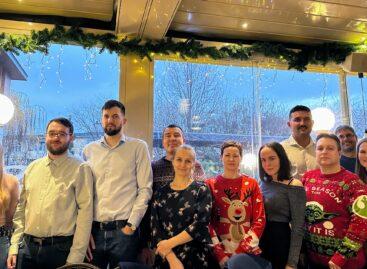Magazine: Brands and risks
GfK has recently published a study that focuses on the risks in brands. For instance in the recent past Coca-Cola was facing the problem of soft drinks being criticised widely for their high sugar content. Six years ago they started to fight against the general negative opinion: they launched zero-calorie products, started communicating the nutritional value of products with greater emphasis, began promoting physical exercise and sports in many countries and stopped advertising to children younger than 12 years.
Susan Fournier and Shuba Srinivasan, the editors of the study write that the time has come for brands to start managing risks, and marketing managers can only manage the special dangers of their brand-related decisions if they are familiar with their essence, what has caused them and their dynamics. They urge brand managers to actively take risk aspects into consideration when planning their brand’s strategy.

Three researchers wrote the chapter about a trap that should be avoided: if the revenues of a company are fluctuating, it is more difficult to plan futures successes and revenues, and to guarantee that cash flow is constant. Due to this investor trust is likely to reduce, which can shake the financial foundations of the brand. In a case like this efficient marketing can result in an undesired financial effect.
Patrick Marrinan, managing principal of New York-based company Marketing Scenario Analytica told in an interview related to the study’s launch: in brand management the level of risks was growing exponentially in the last 10-20 years. Since communication is more and more fragmented, it is increasingly difficult to communicate the messages of brands in a way that is effective and unique. As social media keeps changing, consumers have a growing number of opportunities for participation there. At the same time the socio-economic pressure is also growing, so many people are afraid that they will have financial problems; this fear makes them active and generates resistance. Marketing Scenario Analytica’s experience is that marketing is slowly losing significance at some companies, e.g. P&G and Unilever are investing much less in it than before.
Mr Marrinan’s advice is that companies need to take four steps need to manage brand risks proactively: 1. Companies should define their risk potential and compare it with that of similar companies. 2. Internal marketing processes should be audited, to find and solve existing problems. 3. Firms should develop processes that can prepare the company for crisis situations. 4. Businesses should build a risk monitoring system. //
Related news
Signature 40 – the region’s new common language: An interview with founders Márton Nagy and Ádám Vaszary on the new dimension of the Signature Platform in 2026
🎧 Hallgasd a cikket: Lejátszás Szünet Folytatás Leállítás Nyelv: Auto…
Read more >Hungarian expert named Data-Driven Marketing Leader of the Year in Europe
🎧 Hallgasd a cikket: Lejátszás Szünet Folytatás Leállítás Nyelv: Auto…
Read more >Germans Open to AI Agents in Shopping
🎧 Hallgasd a cikket: Lejátszás Szünet Folytatás Leállítás Nyelv: Auto…
Read more >Related news
New Year’s Eve: shortened opening hours in stores – general store closure on January 1
🎧 Hallgasd a cikket: Lejátszás Szünet Folytatás Leállítás Nyelv: Auto…
Read more >Tejföl is only a name for live flora: new categories for sour dairy products will be introduced from 2026
🎧 Hallgasd a cikket: Lejátszás Szünet Folytatás Leállítás Nyelv: Auto…
Read more >Sausage prices before New Year’s Eve: cheap entry, expensive premium – how big is the gap on the shelves?
🎧 Hallgasd a cikket: Lejátszás Szünet Folytatás Leállítás Nyelv: Auto…
Read more >






